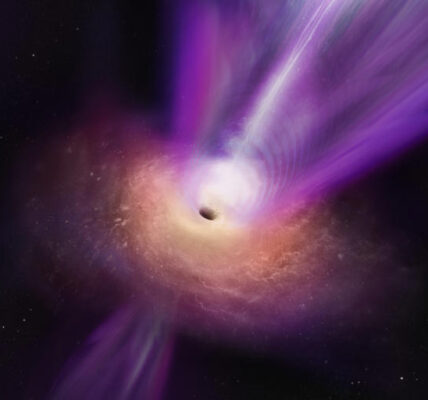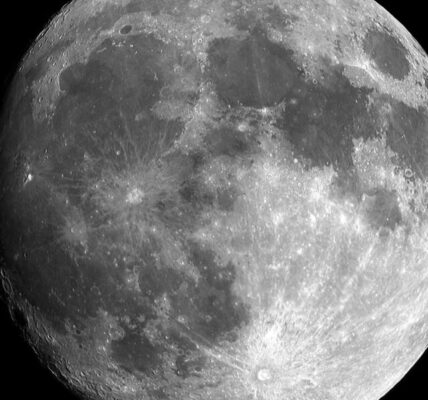C-Type Asteroid Chicxulub Impact: New research suggests that the asteroid that caused the Chicxulub crater and ended the reign of the dinosaurs was a carbon-rich, C-type asteroid. Discover the latest insights into this ancient cosmic event.

© Photograph: Science Photo Library/Alamy
C-Type Asteroid Chicxulub Impact: New Insights into the Dinosaur-Killing Asteroid
The C-Type Asteroid Chicxulub Impact that struck Earth 66 million years ago was a pivotal event in our planet’s history. This colossal space rock caused the mass extinction that ended the reign of the dinosaurs. Recent research has shed new light on what this impactor was made of, suggesting that it was a carbon-rich, C-type asteroid.
Unveiling the Asteroid’s Composition
Researchers have been delving into the remnants of this ancient impact to understand more about the asteroid responsible for the Chicxulub crater. By examining layers of material deposited globally after the impact, scientists have found compelling evidence that the asteroid was a C-type, or carbonaceous, asteroid. These findings come from studying different isotopes of ruthenium, a rare metal, found in the layer of debris left by the impact.
Ruthenium’s Role in Identifying the Asteroid
C-Type Asteroid Chicxulub Impact research focused on ruthenium because it is not commonly found in Earth’s crust. The team discovered that the ruthenium present in the impact layer was almost entirely derived from the asteroid itself. This finding provides a clear indication of the asteroid’s composition and supports the hypothesis that it was a C-type asteroid.
Samples from various locations, including Denmark, Italy, and Spain, all displayed the same ruthenium isotope composition. This consistency across different regions strengthens the case that the Chicxulub impactor was a C-type asteroid, as opposed to other theories.
Ruling Out Other Possibilities
The research challenges several previous theories about the impactor’s origin. One such theory suggested that the presence of metals like ruthenium could be attributed to volcanic eruptions from the Deccan Traps. However, the unique ruthenium isotope composition found in the impact layer does not match the composition typically associated with volcanic activity.
Moreover, the study casts doubt on the comet theory. Comets are known to have different isotopic signatures than those found in the impact layer. The ruthenium isotopes discovered align more closely with those of C-type asteroids rather than with meteorites from comets.
What Are C-Type Asteroids?
C-Type Asteroid Chicxulub Impact has revealed that the asteroid was likely a C-type asteroid, which are carbon-rich space rocks formed early in the solar system’s history. These asteroids originally formed beyond the orbit of Jupiter and are known for their high carbon content. The study’s findings suggest that this particular asteroid may have come from the asteroid belt between Mars and Jupiter, a region where many C-type asteroids are found today.
The Asteroid’s Journey to Earth
The journey of the C-type asteroid to Earth is a subject of ongoing investigation. One possible scenario is that the asteroid was part of a collision in the asteroid belt, which could have sent fragments on a path toward Earth. Another possibility is that the asteroid originated from the Oort cloud, a distant region surrounding the solar system, and eventually crossed Earth’s orbit.
Future Research and Implications
Mario Fischer-Gödde, a co-author of the study from the University of Cologne, expressed interest in exploring the deposits from another significant extinction event that occurred about 215 million years ago. By examining similar impact layers from that period, scientists hope to determine if C-type asteroids are more likely to cause mass extinctions compared to other types of space rocks.
Dr. Craig Walton from the University of Cambridge, who was not involved in the study, highlighted the importance of this research. While there is still some debate over whether the impactor was an asteroid or a comet, the findings offer valuable insights into the objects that have dramatically shaped Earth’s history.
Conclusion
The C-Type Asteroid Chicxulub Impact research provides a clearer picture of the cosmic event that led to the extinction of the dinosaurs. By identifying the asteroid as a carbon-rich C-type, scientists have made significant progress in understanding the composition of ancient impactors. As research continues, we may uncover more about the origins and impacts of these ancient space rocks, offering further insights into the forces that have shaped our planet.
This new understanding not only enhances our knowledge of the Chicxulub impact but also contributes to our broader comprehension of how different types of asteroids and comets have influenced Earth’s history.
ALSO READ:
Origin of Dinosaur-Killing Meteor: 3 Shocking Truths Revealed




